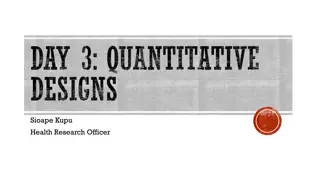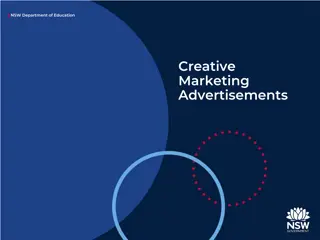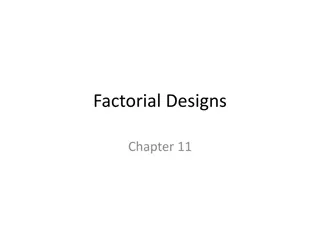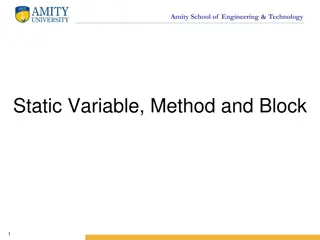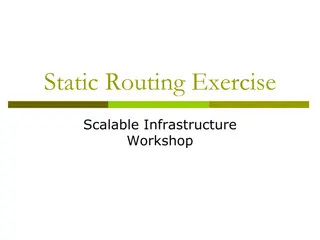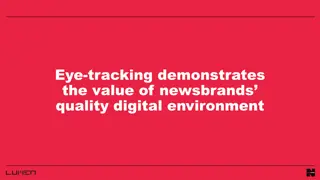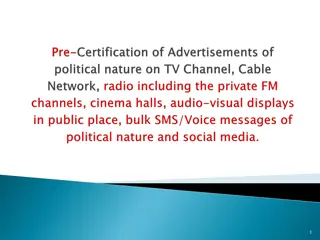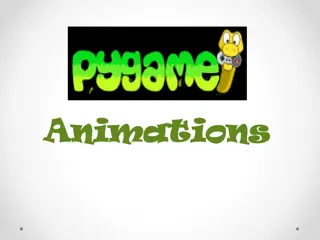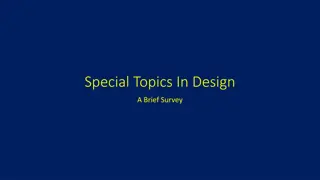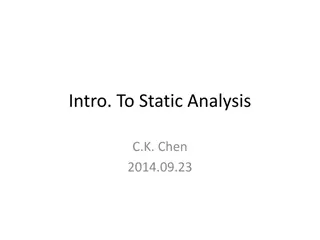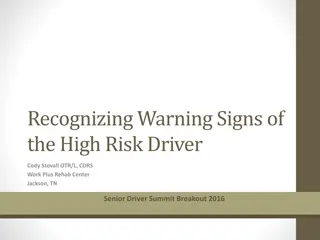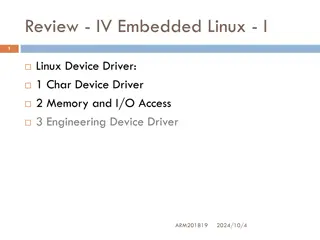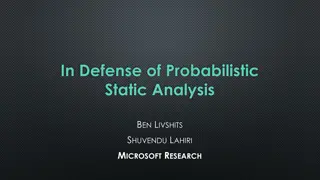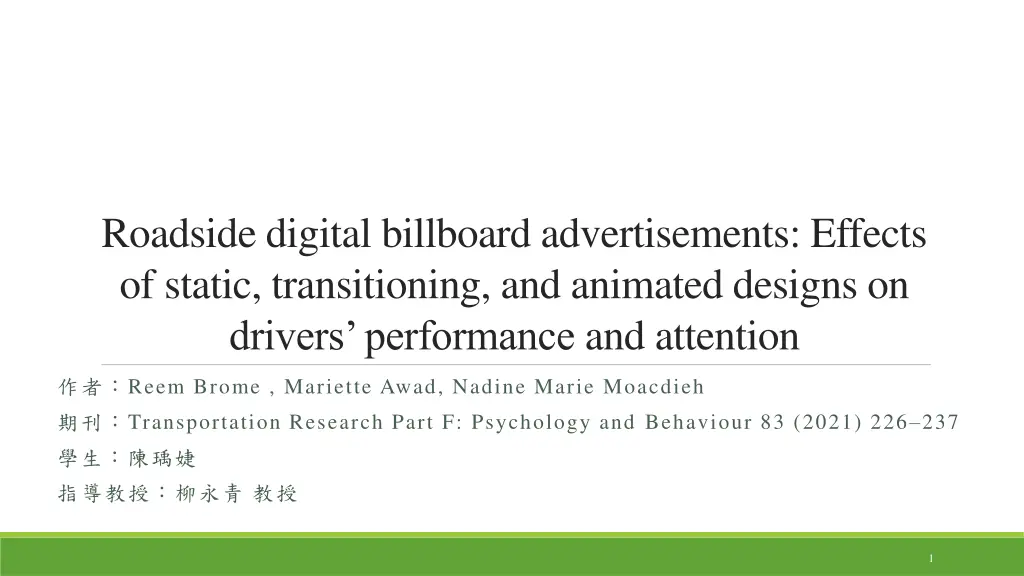
Effects of Digital Billboard Designs on Driver Performance
Explore the impact of static, transitioning, and animated designs on drivers' focus and performance through roadside digital billboard advertisements. Research findings reveal insights into attention levels and psychological responses.
Download Presentation

Please find below an Image/Link to download the presentation.
The content on the website is provided AS IS for your information and personal use only. It may not be sold, licensed, or shared on other websites without obtaining consent from the author. If you encounter any issues during the download, it is possible that the publisher has removed the file from their server.
You are allowed to download the files provided on this website for personal or commercial use, subject to the condition that they are used lawfully. All files are the property of their respective owners.
The content on the website is provided AS IS for your information and personal use only. It may not be sold, licensed, or shared on other websites without obtaining consent from the author.
E N D
Presentation Transcript
Roadside digital billboard advertisements: Effects of static, transitioning, and animated designs on drivers performance and attention Reem Brome , Mariette Awad, Nadine Marie Moacdieh Transportation Research Part F: Psychology and Behaviour 83 (2021) 226 237 1
Introduction 2019 15% (NHTSA, 2021) (ISO) Rajendra and Dehzangi (2017) (Ayd n, & Nisanc , 2008; Belyusar, Reimer, Mehler, & Coughlin, 2016; Domke, Wandachowicz, Zalesinska, Mroczkowska, & Skrzypczak, 2012) Edquist, Horberry, Hosking, and Johnston (2011) 2
Introduction Dukic, Ahlstrom, Patten, Kettwich, and Kircher (2013) Putze, Jarvis, & Schultz, 2010; Yang & Jeong , 2015) (Liang, Reyes, & Lee, 2007; Zhang, Owechko, & Zhang, 2004) (Wang, Clifford, Markham, & Deegan, 2021) 3
Introduction (theta) (beta) (Dehzangi, Rajendra, & Taherisadr, 2018; Lin et al., 2008; Lin, Chen, Ko, & Wang, 2011) ( Edquist, Horberry, Hosking, & Johnston, 2011; Belyusar, Reimer, Mehler, & Coughlin, 2016; Dukic, Ahlstrom, Patten, Kettwich, & Kircher, 2013) ( ) 4
Method- 100 59 41 23.3 (18~44 ) 5
Method- DriveSafety 180 60 Hz ( ) Fovio Emotiv EPOC 14-channel 6
Method- 27 ( 9 ) 11% 55% 400 7
Method- Emotiv EPOC 10 140 10 45 8
Method- ( ) 1. (m/s) 3. (m) 2. (m/s2) 4. (s) 9
Method- 1. (%) 2. (s) 3. ( ) 10
Method- EEG 1. Theta theta 2. Alpha alpha 3. Beta Beta 11
Result- (F(3, 297) = 1.750 p = 0.172) (F (3, 297) = 1.849 p = 0.138) (F (3, 297) = 1477.180 p < 0.001) (F (3, 297) = 31.196, p <0 .001) 12
Result- (F (2, 198) = 60.762, p < 0.001) (F(2, 198) = 77.814, p < 0.001) (F (2, 198) = 91.780, p < 0.001) 13
Result-EEG Theta ( =0.727 =0.803 =0.783 =0.797, p < 0.001) Alpha (F(3, 297) = 1.581, p = 0.194) Beta (F(3,297) = 8.114, p < 0.001 ) 14
Discussion Edquist, Horberry, Hosking, and Johnston (2011) Belyusar, Reimer, Mehler, & Coughlin, (2016); Dukic, Ahlstrom, Patten, Kettwich, & Kircher, (2013) 15

